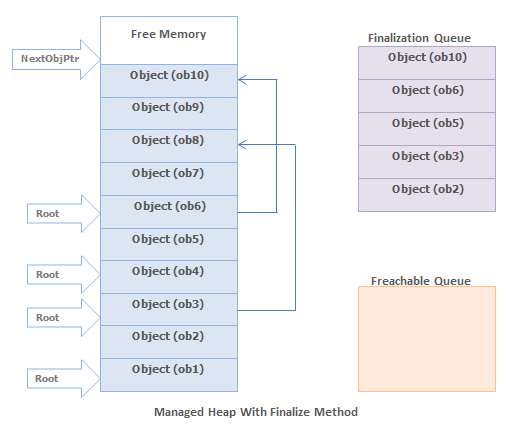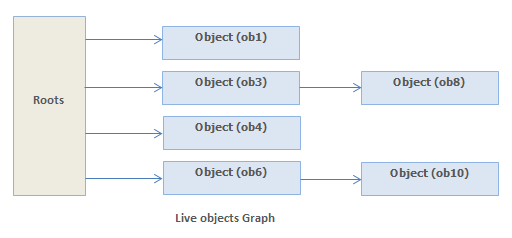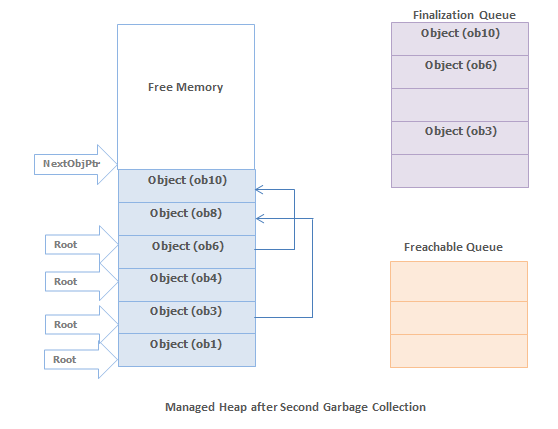18
Apr.Net Garbage Collection and Finalization Queue
Finalize is a special method that is automatically called by the garbage collector (GC) before the object is collected. This method is only called by the GC. The destructor in C# is automatically translated into Finalize. By learning this from Dot Net Certification, You can see the IL code using IDASM where you will see that destructor is renamed to finalize.
public class A
{
~A()
{
Console.WriteLine("Class A Destructor");
//Clean up unmanaged resources here
}
} The CLR translate the above C# destructor to like this:
public override void Finalize()
{
try
{
Console.WriteLine("Class A Destructor");
//Clean up unmanaged resources here
}
finally
{
base.Finalize();
}
} Fundamental of Finalization
When a new object is created, the memory is allocated in the managed heap. If newly created object have a Finalize() method or a destructor then a pointer pointing to that object is put into the finalization queue. Basically, finalization queue is an internal data structure that is controlled and managed by the GC. Hence each pointer in finalization queue points to an object that have its Finalize method call before the memory is reclaimed. You can get vast knowledge about it by learning the .NET Course.
In the below fig. the managed heap contains 10 objects and objects 2,3,5,6,and 10 also contains the Finalize method. Hence pointers to these objects were added to the finalization queue.

When the garbage collector starts go through the roots, it make a graph of all the objects reachable from the roots. The below fig. shows a heap with allocated objects. In this heap the application roots directly refer to the objects 1,3,4,6 and object 3 & 6 refers to the objects 8 & 10. Hence all these objects will become the part of the live objects graph.

The objects which are not reachable from application's roots, are considered as garbage since these are not accessible by the application. In above heap objects 2,5,7,9 will be considered as dead objects.
Before the collections for dead objects, the garbage collector looks into the finalization queue for pointers identifies these objects. If the pointer found, then the pointer is flushed from the finalization queue and append to the freachable queue .The freachable queue is also an internal data structure and controlled by the garbage collector. Now each and every pointer with in the freachable queue will identify an object that is ready to have its Finalize method called.
After the collection, the managed heap looks like below Fig. Here, you see that the memory occupied by objects 7 and 9 has been reclaimed because these objects did not have a Finalize method. However, the memory occupied by objects 2 and 5 could not be reclaimed because their Finalize method has not been called yet.

When an object's pointer entry move from the finalization queue to the freachable queue, the object is not considered garbage and its memory is not reclaimed. There is a special run-time thread that is dedicated for calling Finalize methods. When there is no entry in the freachable queue then this thread sleeps. But when there is entry in the freachable queue, this thread wakes and removes each entry from the queue by calling each object's Finalize method.

The next time the garbage collector is invoked, it sees that the finalized objects are truly garbage, since the application's roots don't point to it and the freachable queue no longer points to it. Now the memory for the object is simply reclaimed.
Note
The two GCs are required to reclaim memory used by objects that have Finalize method.
Reference : http://msdn.microsoft.com/en-us/magazine/bb985010.aspx
What do you think?
I hope you will enjoy these deep tips about garbage collector with finalize method in .net framework. I would like to have feedback from my blog readers. Your valuable feedback, question, or comments about this article are always welcome.







